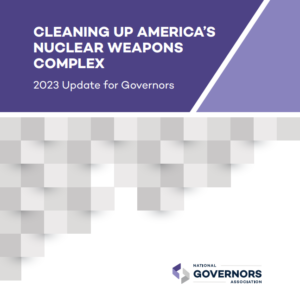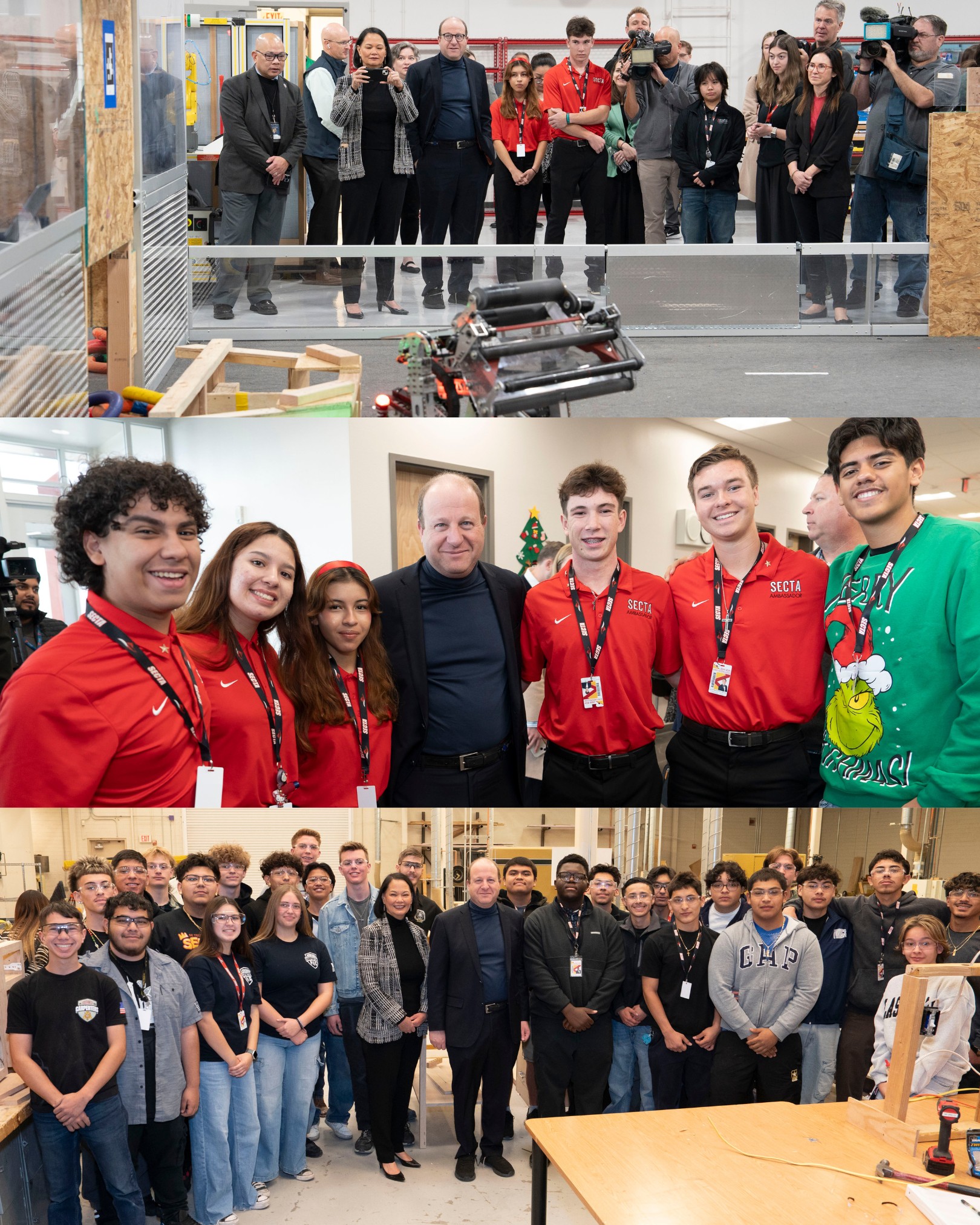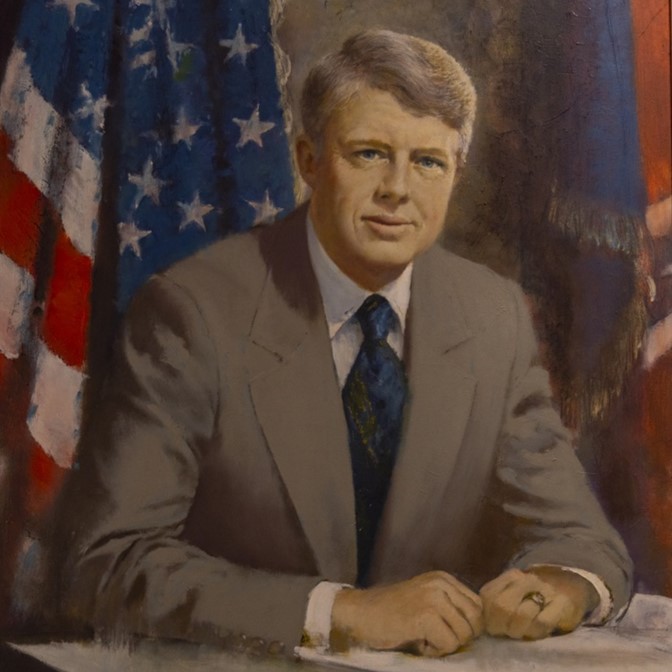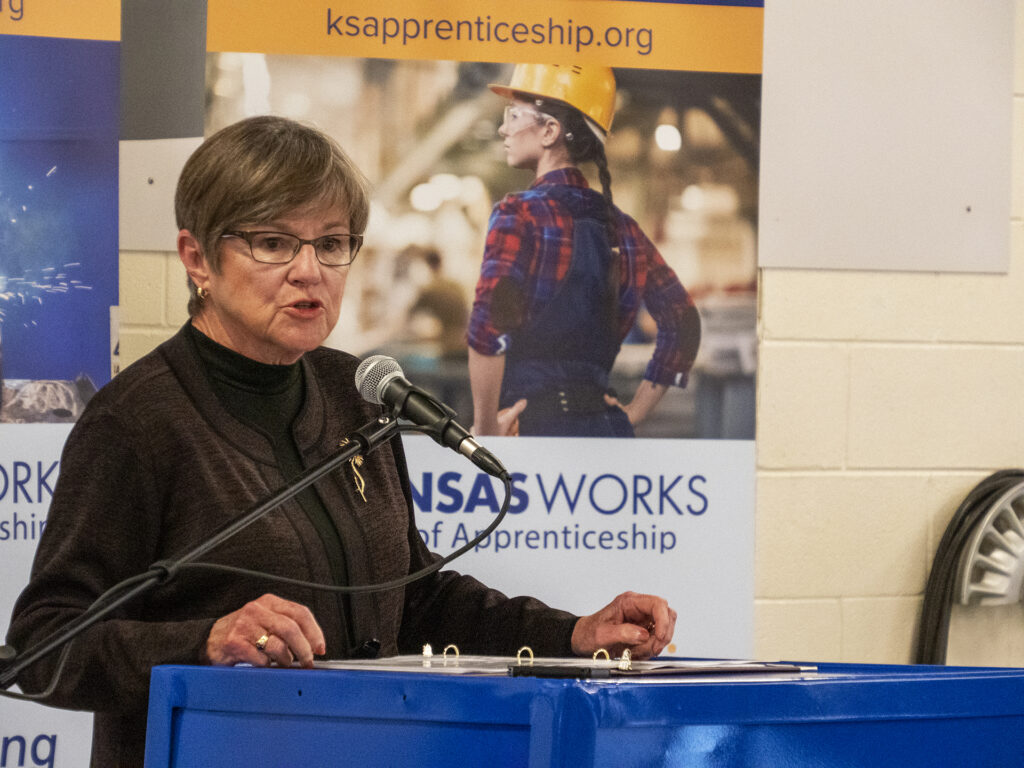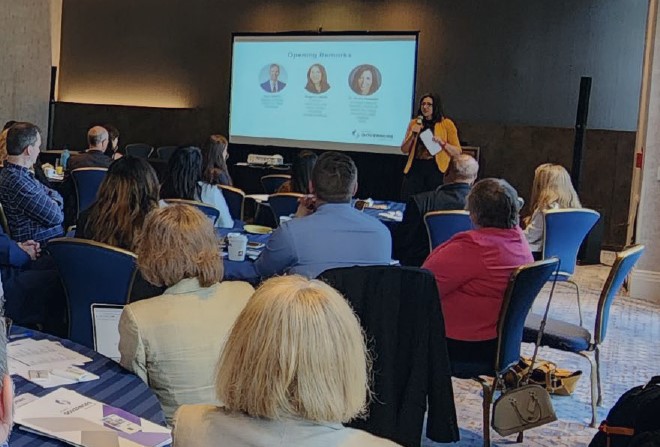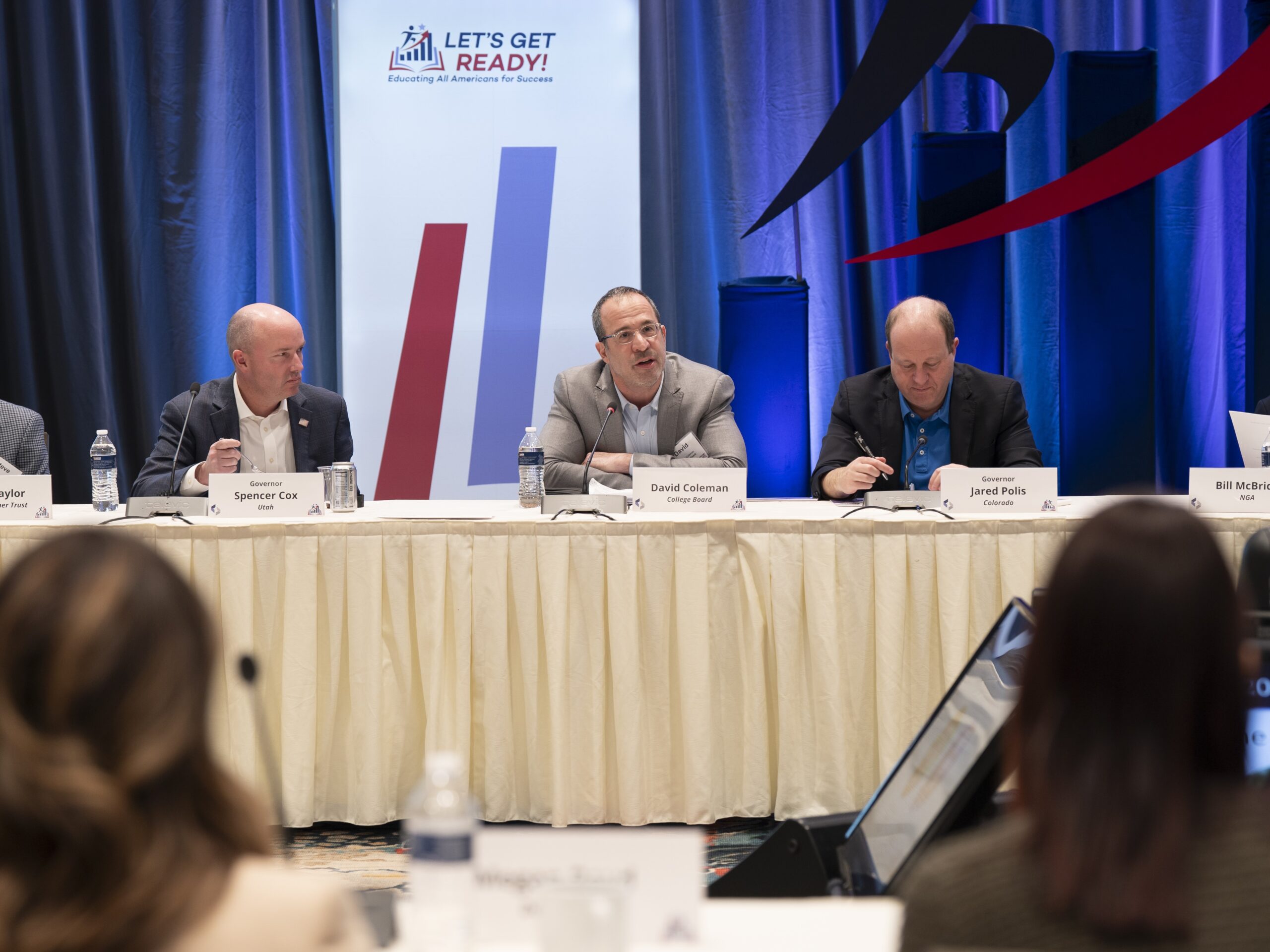Since the 1992 enactment of the Federal Facilities Compliance Act, the U.S. Department of Energy Office and states have worked together to clean up the nuclear weapons complex.
(Download)
Executive Summary
The research, testing and production of America’s nuclear arsenal that began during World War II and continued throughout the Cold War was critical to U.S. national security. However, this work resulted in significant environmental contamination at sites across the country. That contamination is now the focus of the largest environmental cleanup effort in the world. The U.S. Department of Energy Office of Environmental Management (DOE EM) spends more than $6 billion per year to fund cleanup activities and manage the cleanup sites. States play an important role in the cleanup partnership, overseeing the cleanup effort and working with DOE EM to ensure that federal and state laws are followed and that cleanup decisions are transparent, responsible and equitable. The National Governors Association (NGA) Center for Best Practices’ Federal Facilities Task Force (FFTF) is a forum in which states directly affected by the cleanup effort can communicate with each other and with DOE EM on waste disposal progress, priorities and challenges and stay informed about technology, policy and budget developments. The FFTF includes California, Idaho, Kentucky, Missouri, Nevada, New Mexico, New York, Ohio, Oregon, South Carolina, Tennessee, Texas and Washington.
Important progress has been made since DOE EM was established in 1989 and the FFTF was founded in 1993, including the establishment of legal frameworks and agreements for cleanup, completion of cleanup operations at 92 of 107 total sites and significant reduction in risk to public health and the environment at all the sites. In addition to successes across the complex, significant cleanup progress has been made in each FFTF state that hosts cleanup sites.
Examples of successes from each state are contained in the body of this report. Recent highlights since the 2015 version of this report include:
- Removal of an entire uranium enrichment complex by 2020 at the Oak Ridge site in Tennessee, the first site in the world to do so;
- Completion of Idaho’s Transuranic Storage Area-Retrieval Enclosure cleanup in 2017;
- Early transfer of land and facility to a private developer for remediation and redevelopment in Missouri in 2017;
- Final cleanup of the Hanford hazardous waste burial grounds in Washington in 2018;
- Land transfer for community reuse in Ohio in 2018;
- Demolition of the West Valley vitrification plant in New York in 2018;
- Restarting waste disposal in 2017 at the Waste Isolation Pilot Plant in New Mexico after operations were suspended in 2014 because of an accident and radiation release;
- Cleanup and closure of more than 1,000 contaminated sites at Nevada National Security Site; transfer of 70 closed sites on and around the Tonopah Test Range to DOE Office of Legacy Management;
- Removal of contaminated structures, groundwater treatment, and stormwater treatment at Santa Susana Field Lab in 2021-2022 and Lawrence Livermore National Laboratory in California; and
- Closure of waste tanks, vitrification of high-level waste, and salt waste processing at the Savannah River Site in South Carolina.
Progress continues, but substantial work remains. Completing the cleanup is projected to cost between $652 and $887 billion (in 2022 dollars) and last through at least 20782, assuming that all technical, regulatory and funding challenges are overcome.
Each site has its own unique environmental and regulatory challenges, but the states share the following five priority issues, each of which is supported by their adopted principles as noted after each issue:
Jointly Setting Funding Priorities. States have worked with DOE EM to ensure that funding is sufficient to meet cleanup requirements and that budget decisions are made transparently and in consultation with states. Because funding for cleanup fluctuates, however, and cannot cover every project in the DOE EM portfolio, it is important for DOE EM to proactively seek state input on cleanup project priorities and communicate to states the effect that deferred cleanup will have in the short term on the ultimate cost and timeline for completing cleanup. The FFTF encourages DOE EM to set priorities jointly with states during budget shortfalls by using the principles developed by the FFTF that incorporate “risk plus other factors” as a priority-setting framework.
Ensuring Compliance. Existing agreements between states and DOE EM that establish cleanup plans and timetables also establish cleanup milestones and provide states with legal recourse when cleanup is not adequately progressing. Understanding whether and how DOE EM will meet its compliance requirements and how it will respond if it cannot do so is a crucial element of state oversight. State concerns with compliance also include determining levels of cleanup that will be protective over the long term, enabling effective state oversight, including appropriate roles for risk in decision making and ensuring that DOE EM assesses and compensates for damage to natural resources. The FFTF encourages pursuit of site cleanup levels that allow for public reuse and, if waste must be left in place, application of long-term stewardship to protect human health and the environment. The FFTF encourages risk-informed decision making, open and transparent communication from DOE EM on long-term planning and transparency when DOE EM is in jeopardy of missing compliance milestones. The FFTF also encourages DOE EM’s fulfillment of obligations under the Natural Resource Damage Assessment and restoration process.
Managing Waste Safely. States and DOE EM have worked together to make transparent, equitable decisions about the treatment, transportation, and disposal of radioactive waste. States continue to work with DOE EM to ensure that all parties manage all waste types according to DOE’s internal management guidelines, transport waste safely and appropriately monitor sites with long-term contamination. The FFTF supports DOE’s efforts to develop interim storage and permanent disposal options for high-level radioactive waste (HLW) that have the consent of host states and to coordinate transportation with affected states. DOE published a Federal Register Notice on December 21, 2021 (86 FR 72220) affirming its HLW Interpretation, which outlines an approach, within the existing legal definition, that allows radioactive waste generated from the reprocessing of spent nuclear fuel for atomic defense purposes to be disposed in accordance with its radiological characteristics and not solely from the process that generated the waste. States are concerned that this interpretation could affect agreed-upon strategies and locations for waste disposal. The FFTF encourages DOE to consult with states to understand the impact that the change in waste classification methodology will have on compliance agreements and on the ultimate disposition of waste.
Improving Communication. The FFTF is concerned about unclear processes for discussing concerns with DOE EM and lack of notification on key issues. States have several avenues for communicating concerns, such as advisory boards and local DOE EM site offices, but the FFTF questions whether current forums are adequate to elevate major or long-standing disputes. The FFTF supports establishing direct communications channels and protocols with DOE EM to elevate and resolve major and long-standing disputes.
Developing Uniform Emergency Response Communication Protocols. With the proliferation of smartphones and social media, information, misinformation and unauthorized photographs can be shared rapidly on the internet and national television. During an emergency, it is critical that intergovernmental partners and the public receive correct information and for misinformation to be dispelled quickly. The FFTF suggests that DOE EM, in coordination with the states and other parties, develop a uniform public communications protocol for emergency situations that recognizes rapid dissemination of information in the age of social media.
The development of America’s nuclear weapons program lasted several decades and directly affected communities across the country. Cleaning up the program’s environmental legacy will take many more decades, cost billions of dollars and require a strong partnership between the states and the federal government to complete. Despite the high cost, lengthy timeline, and other challenges, states appreciate and are committed to their partnership with DOE EM to ensure the success of the cleanup mission. The FFTF looks forward to helping maintain this strong state-federal partnership, which will ultimately result in greater protections for human health and the environment for generations to come.

